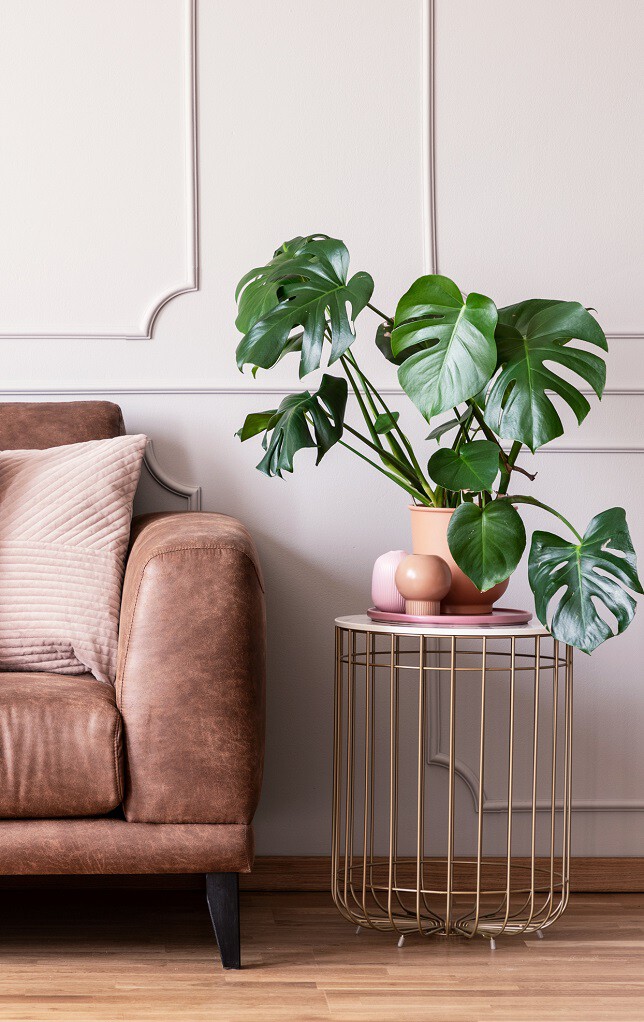Good news: It doesn't take much to keep these exotic houseplants happy.

When it comes to recognizable houseplants, the Monstera is high on the list, neck-and-neck with fiddle leaf fig trees. There's a reason for the variety's popularity, however, that goes far beyond its aesthetics: Believe it or not, this houseplant is as easy to care for as it is Instagram-able.
Known for their "Swiss cheese" look, both Monstera deliciosa (this iteration has leaves that split at the edges) and Monstera adansonii (which has holes in the leaf centers) are delightfully low-maintenance. Just water them when their soil is dry to the touch, about once a week, and give them plenty of sunshine. The sun level is ultimately key to a happy Monstera—and you'll know relatively quickly if your plant's exposure is sufficient (or not). "In dim conditions, they can get 'leggy'—spindly and floppy," says Byron Martin, owner of Logee's Plants in Danielson, Connecticut. "Aim for medium or bright indirect light."
There's a reason for this broad light range, adds Byron: "Monstera originated in tropical forests, where it grows on the forest floor. Traditionally, it's an understory plant," he says. "It will grow in the shade until it hits a tree, and then climb up the tree and into more light. So, there's really a big range of light levels that the plant can tolerate. It's a good houseplant for a beginner."
And before you ask: You'll notice that the leaves are solid green in juvenile plants, to maximize light absorption and photosynthesis. Don't worry—they'll develop their signature perforations as they mature.